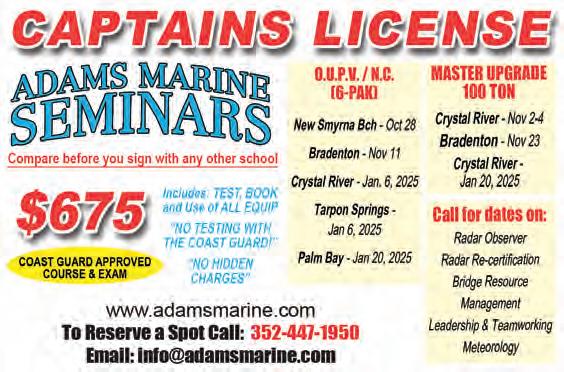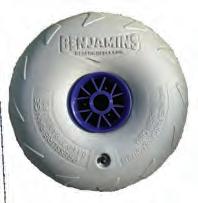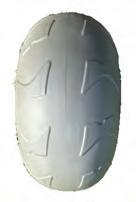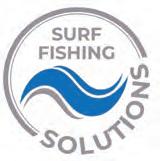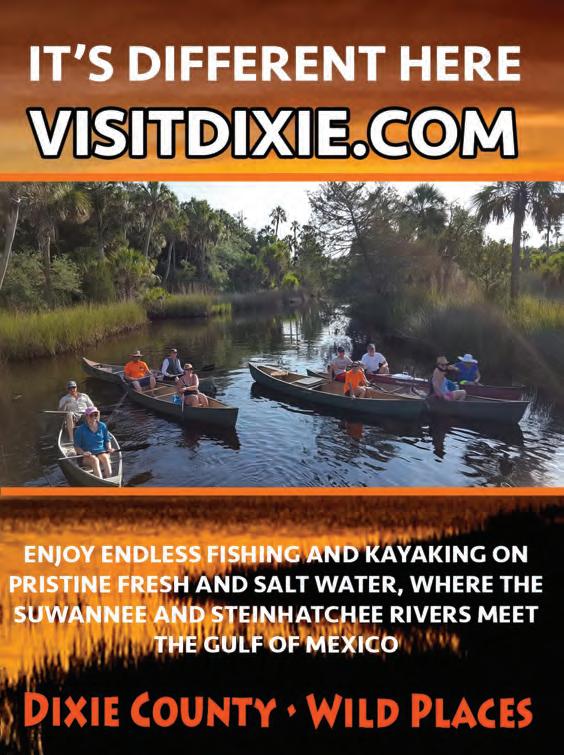
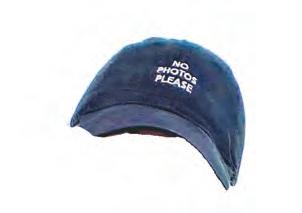
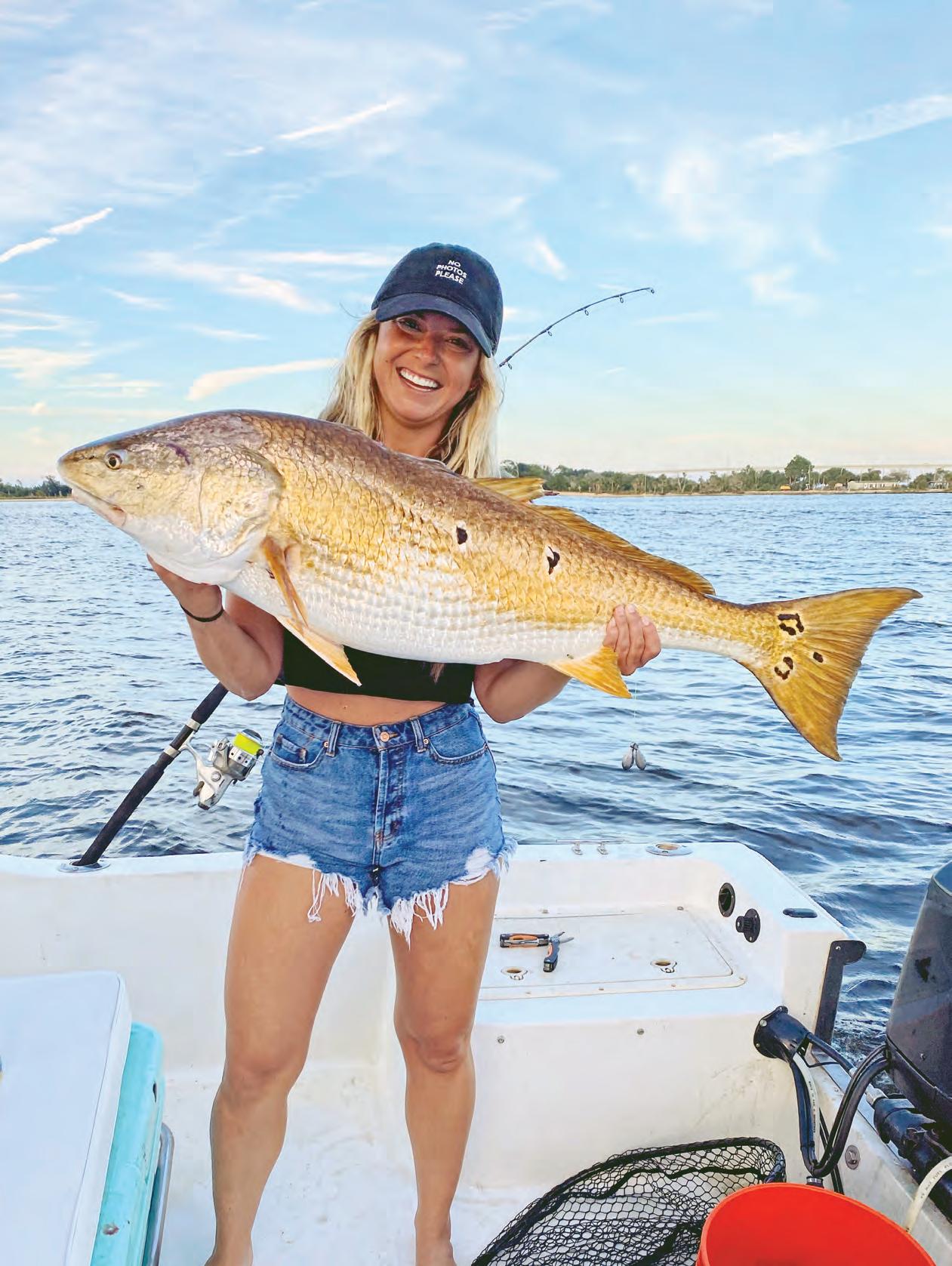





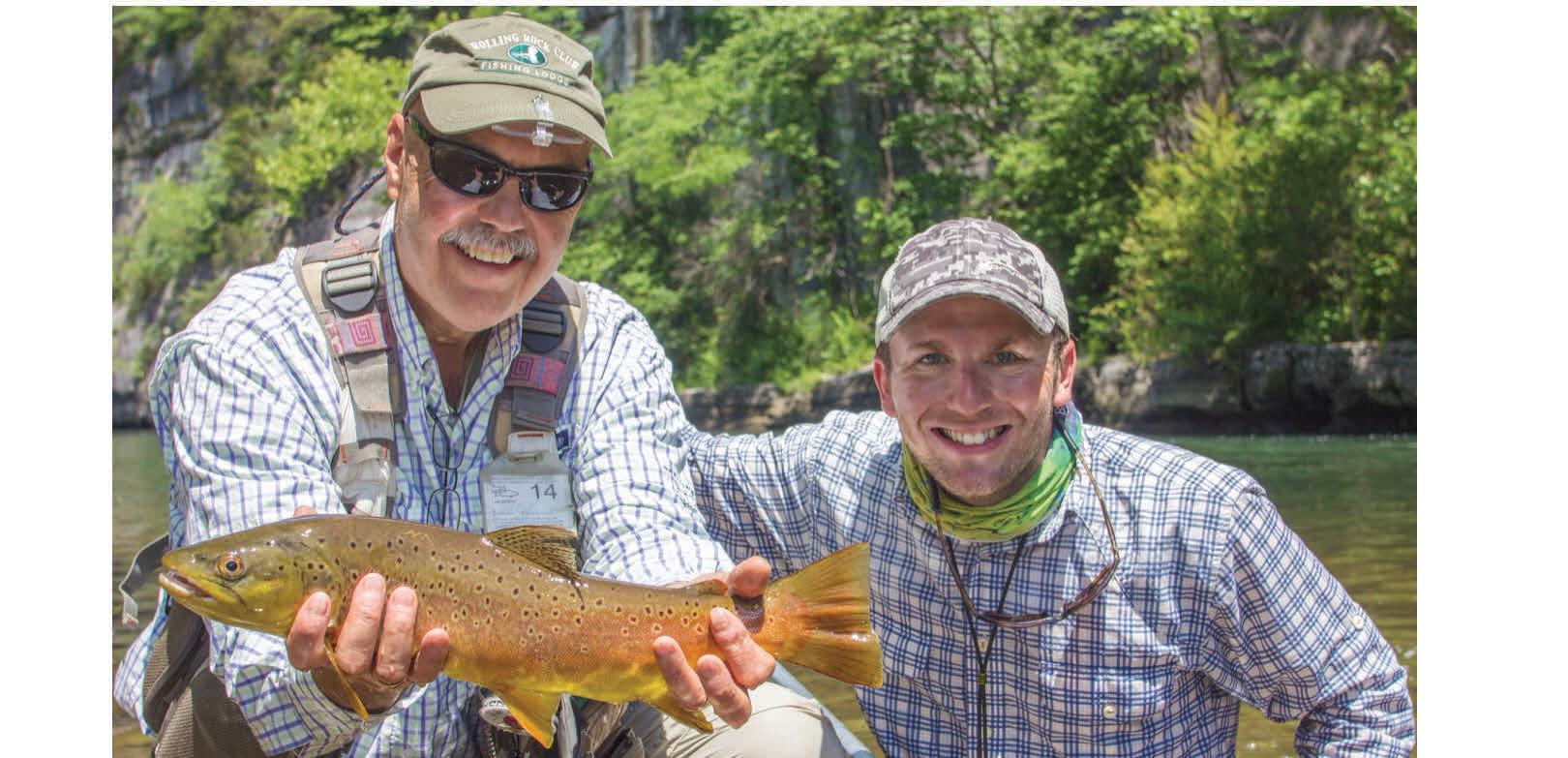


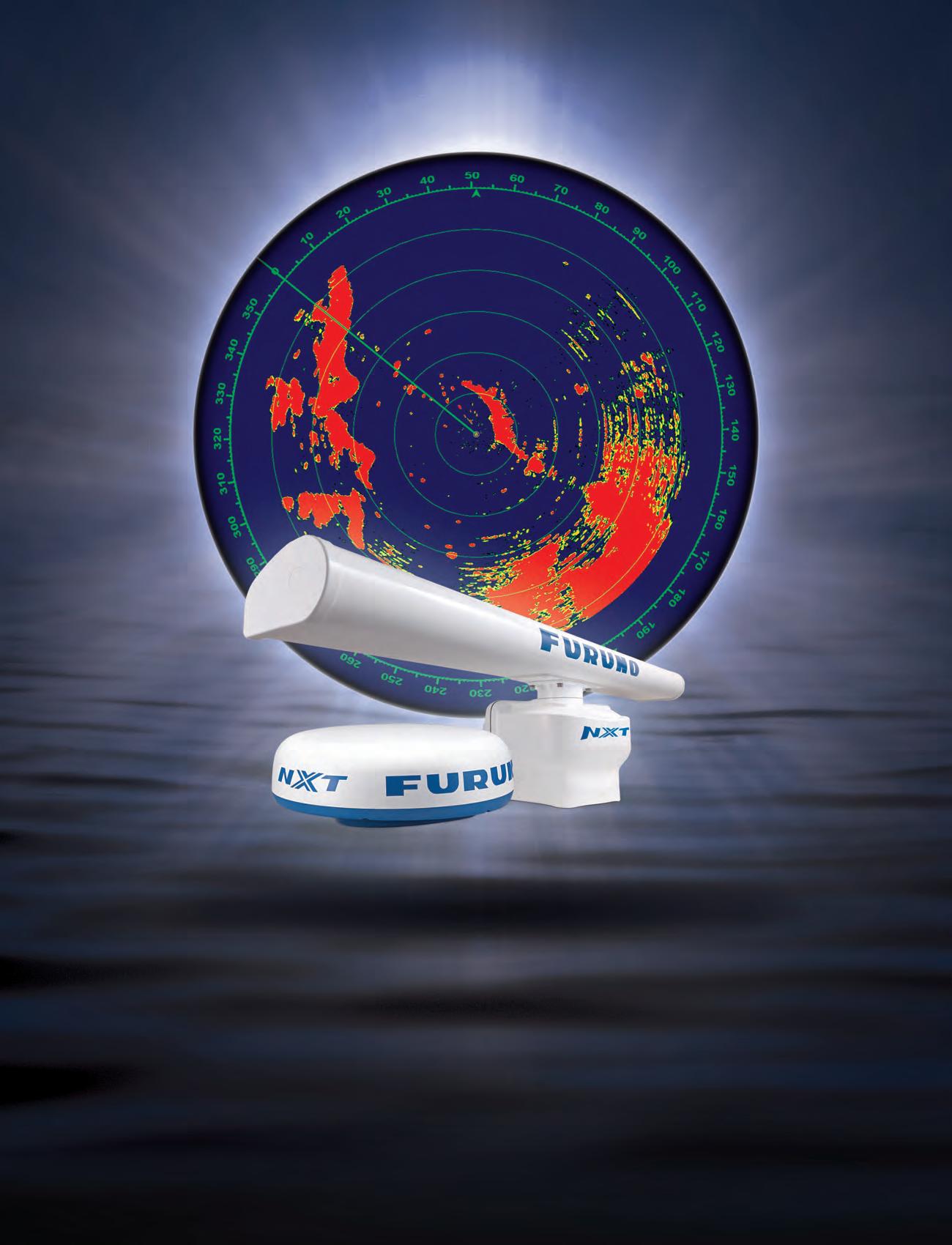
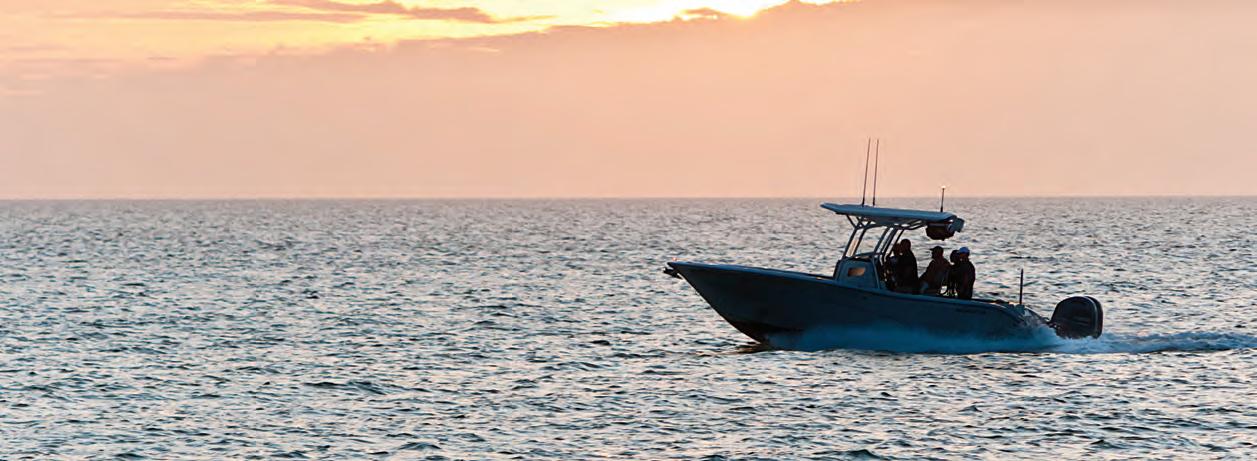
Are you ready to embark on your next on-water adventure? Before you set sail, here are ve things to know about boat insurance.
1. Boat insurance isn’t just for accidents
With comprehensive coverage, you’ll also be protected nancially for theft, vandalism, and unexpected events like storms if you need repairs or replacements due to damage.
2. Accidents can happen to anyone
When accidents happen, boat insurance offers liability coverage for damages or injuries you cause while boating, up to speci ed limits. It can also cover lawsuit costs if you’re sued.
3. Boat insurance can cover medical payments
Boat insurance offers a range of optional medical payments coverage limits, helping to cover medical expenses if you’re in an accident or someone is hurt on your boat, regardless of fault.
4. Most lenders require boat insurance
If you nanced your boat, you’ll likely need boat insurance since most lenders require boat insurance to protect their investment. Additionally, some marinas or municipalities require proof of insurance for docking.
5. Progressive offers specialized boat coverages Ever worry about getting stuck on the water? Progressive’s Sign & Glide® On-Water Towing coverage** can help. It’s an additional coverage that steps in if your boat is disabled or breaks down on the water, paying for on-water towing, jump starts, soft ungroundings, and fuel delivery. Fuel cost isn’t included.
Don’t let unforeseen circumstances disrupt your voyage. Cruise with con dence thanks to Progressive Boat insurance. Because when it comes to your boat, peace of mind is the ultimate luxury.
Scan to get a quote in as little as 4 minutes.
to learn more.




















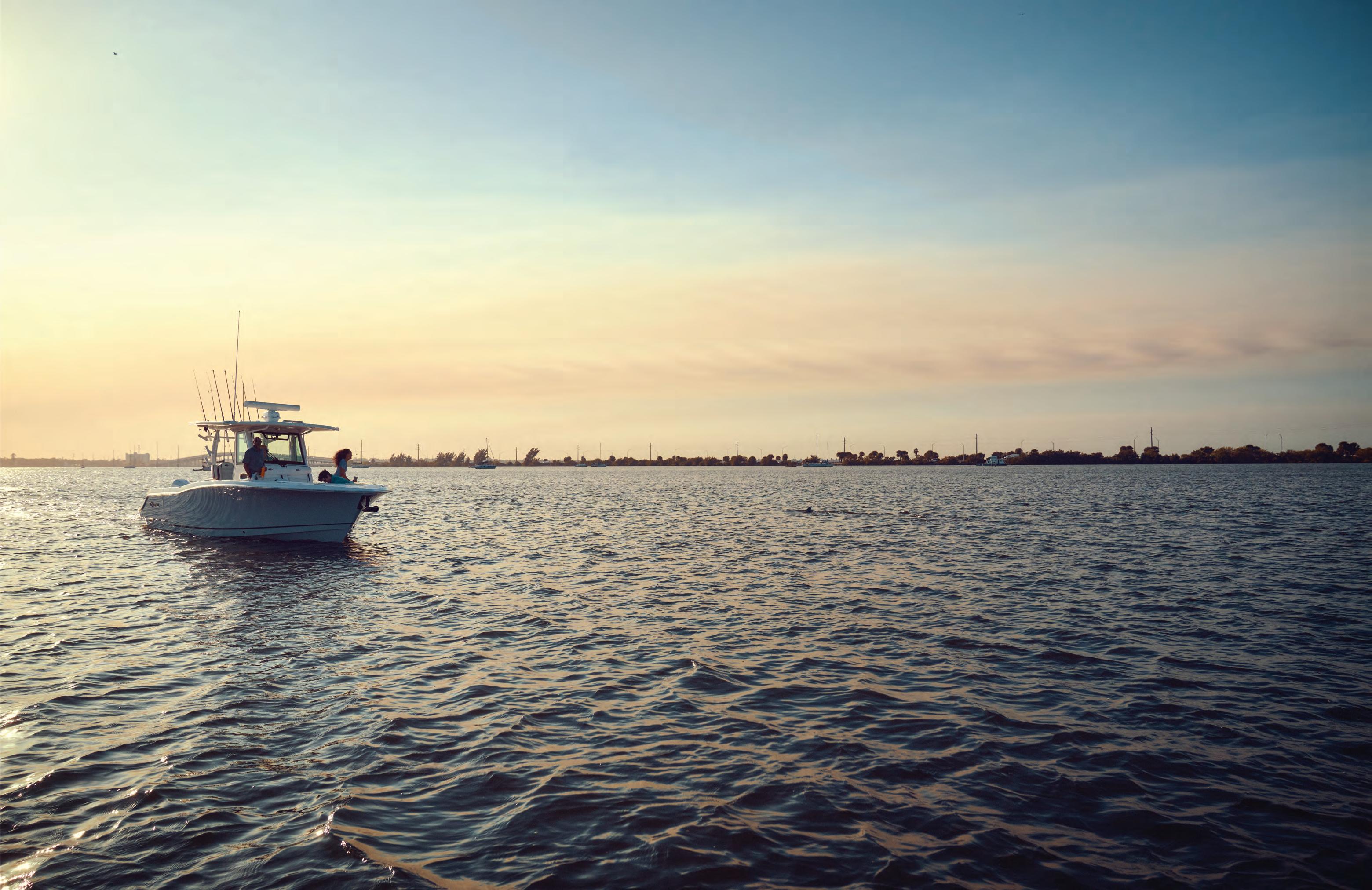

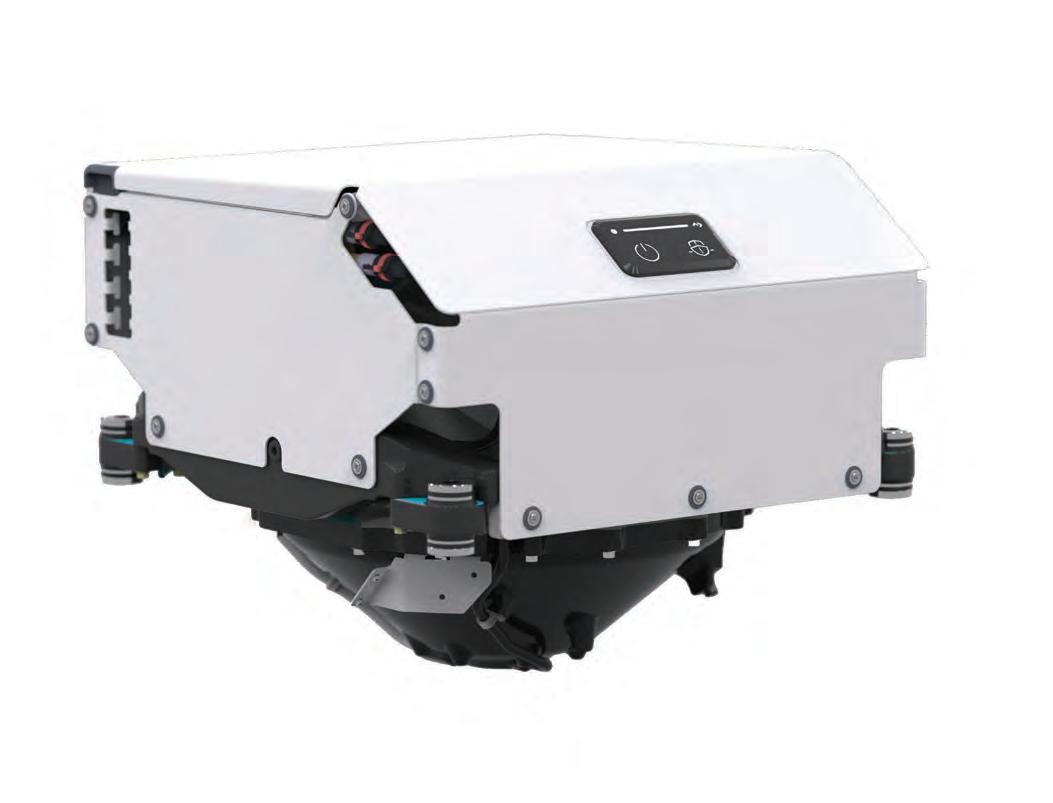


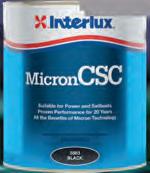



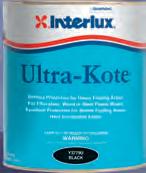
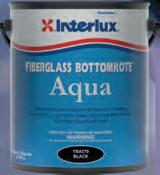




Interlux® fouling control products not only improve your performance by protecting your hull from fouling, they also protect against the spread of invasive species, safeguarding your local waters when exploring new regions, therefore helping you make a difference by looking after the waters that have provided you with enjoyment and freedom for so many years.
Like you, we have a passion for boating. We provide boaters the hull protection they deserve with over 140 years of cutting‑edge science, technology and expertise. You can expect only the best from every Interlux® yacht paint product, providing you the confidence to explore your world.
Relentless performance for every yacht, everywhere, every time. interlux.com





Capt. Mike Smith
Have you ever tried to use big dead baits to catch huge redfish? If you haven’t, then you should.

Many of the larger predatory fish prefer eating fresh, dead baits over live baits so they can save energy.
The odds of becoming an over slot redfish are at least a million to one. An overslot redfish has figured out not only how to avoid predators and how to conserve energy when finding food. That is why dead baits work so well for catching older, wiser and larger redfish.
The best dead baits for redfish are: a large blue crab cut in half, a butterflied large pinfish with its tail cut off, a chunk of ladyfish, and a chunk of bluefish. The key to catching redfish instead of catfish when dead bait fishing is by using enormous dead baits. You want to use baits at least eight inches long. Catfish always seem to find the bait first and most catfish can’t eat an eight inch dead bait.
Quite often you will catch your monster redfish and notice catfish slime on your line. This tells you that a catfish found your bait first but was unable to swallow it. If you are catching catfish with your dead baits, then you have to go bigger.
Pro Tip: Make sure to use at least a 5/0 circle hook and just enough weight to keep the bait stationary on the bottom. If you let the tide drag the bait across the bottom the redfish will have trouble finding it. But if you use too much weight the fish will often feel it and let go of the bait before getting hooked.
Circle hooks are much less likely to get swallowed and mortally wounding the fish, unlike a J hook. A J hook will often get swallowed if you are not constantly paying attention to your line.
When using dead baits for redfish keep the rod in a rod holder. Rod holders are much better at hooking redfish with circle hooks than we are.

Keith caught this monster redfish with an 8-inch chunk of bluefish along a drop off in Florida’s Indian River Lagoon.
When the redfish picks up the bait and swims off with it, the hook will lodge right in the corner of the fish’s mouth.
The best tackle for catching enormous redfish with dead baits is a medium heavy seven-foot-six-inch rod coupled with at least a 5000 series reel. Spool your reel with 30-pound braided line and make sure to have at least a 30-pound leader attached to the hook.
You can certainly catch a 40-inch redfish with a smaller rod and reel combo but the fish will be half dead by the time you get it landed. In that weakened state the fish will sometimes fall prey to a nearby dolphin or shark. There is no sense killing a big breeder redfish that you cannot harvest anyway.
Capt. Mike Smith, owner of Fish Your Ass Off Charters, is an inshore fishing guide who has been fishing the inshore waters, oyster bars and grass flats of Florida for more than 40 years. Reach him at (561) 339-2317, email: contact@fishyourassoff.com or visit fishyourassoff.com.


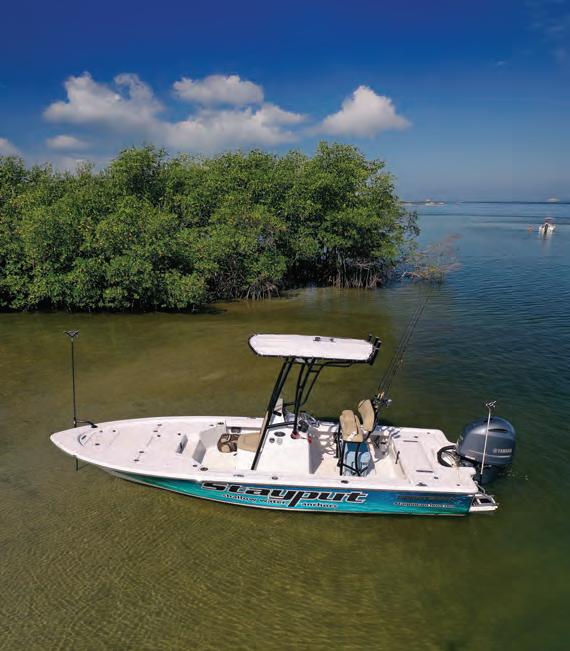
BY NPFL PROFESSIONAL ANGLER JOEY BLOOM
The first cool mornings of fall always bring a little excitement for me. When I back the boat down the ramp and see mist rising off the water, I know the season is changing and the bass are about to do the same. Down here in the Southeast, the fall transition is one of the most unpredictable—but also one of the most rewarding— times of the year.
The key is bait. As soon as water temps slide from the 90s into the mid-70s, shad begin their migration out of the main lake and into the creeks or shallow shorelines. They’re chasing plankton, and the bass are never far behind. If you can find the bait, you’ll find the fish. I don’t even bother making a cast until I see shad flickering on the surface or lighting up my electronics.








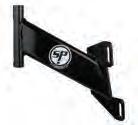

My mornings usually start with topwater or a shad-colored swim jig. A walking bait is one of my favorites to throw across the mouth of a pocket, and it can trigger some of the most violent strikes of the season. I’ll never forget a morning last October when a seven-pounder came out of two feet of water and nearly ripped the rod out of my hand. That’s fall bass fishing— when they decide to eat, they don’t play around.
As the sun gets higher, I shift gears. Shallow wood, laydowns, docks and grass edges become prime ambush points, and that’s when I reach for a squarebill crankbait. I like squarebills because they’ve got just the right wobble and durability to grind through cover. The trick is to make contact—bump that crankbait off a stump, dock, or tick it through grass. Those deflections are what trigger bites. Covering water quickly is important because bass are constantly on the move, shadowing those bait schools.
But not every fish in the lake makes the same move at the same time. Some of the bigger, older bass stay out deeper longer. For those, I keep a Carolina rig handy, and I’ve had great success pairing it with Bait Cave Customs hand-poured soft plastics. That slow drag across a secondary point can tempt those stubborn deep fish that won’t chase a moving bait.
Weather plays a huge role, too. A cold front will slow everything down, and that’s when I switch to finesse—something like a Bait Cave Customs, Cave Club finesse worm on a shaky head, worked methodically. On the flip side, a cloudy, stable day can set off a feeding frenzy, and that’s the time to throw reaction baits and keep covering water. Fall fishing here is a constant adjustment game, and you have to be willing to change with the conditions.
At the end of the day, the fall transition is like putting a puzzle together. The pieces change daily—sometimes hourly—but once you figure out where the bait is, how the bass are relating, and what they’ll react to, the action can be phenomenal. It’s the season where I cover the most water, throw the widest variety of baits, and stay the most flexible.
For me, that’s what makes fall in the Southeast so special. It’s unpredictable, challenging, and full of opportunity. And when everything lines up, it’s some of the best bass fishing of the entire year. With the right mindset—and the right tackle—you can make this season one to remember. Follow all of Joey Bloom’s fishing and fun on Instagram, Facebook, and YouTube at Joey Bloom Fishing.



Perdido Key
FLORA BAMA
HOLIDAY HARBOR MARINA
PERDIDO KEY VISITOR CENTER
PERDIDO KEY RV RESORT TOP GUN TACKLE
Pensacola Gulf Breeze
JIM’S FIREARMS
JOE PATTI’S SEAFOOD
LEGENDARY MARINE PENSACOLA
MARINE MAX
NICK’S BOATHOUSE
OUTCAST BAIT & TACKLE
PENSACOLA BEACH MARINA
PENSACOLA PIER
WALMART-PENSACOLA BLVD
FREEDOM BOAT CLUB
FLORIDA WELCOME CENTER
GULF BREEZE BAIT & TACKLE
SAND CRAB BAR
SANTA ROSA COUNTY VISITORS CENTER
WALMART- NAVARRE Destin
Fort Walton HALF HITCH TACKLE- NAVARRE
ACADEMY- FORT WALTON
AJ’S OYSTER SHANTY
DESTIN/ FORT WALTON VISITOR CENTER
WALMART- FORT WALTON BEACH WEST MARINE
BASS PRO SHOPS
BOSHAMPS SEAFOOD & OYSTER HOUSE
DICK’S SPORTING GOODS
HALF HITCH-DESTIN
HAMPTON INN SUITES
HARBOR WALK MARINA
HARBOR WALK VILLAGE
LEGENDARY MARINA
WALMART SUPERCENTER
WEST MARINE


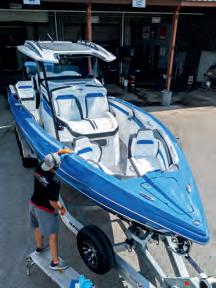
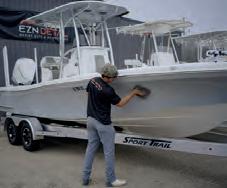




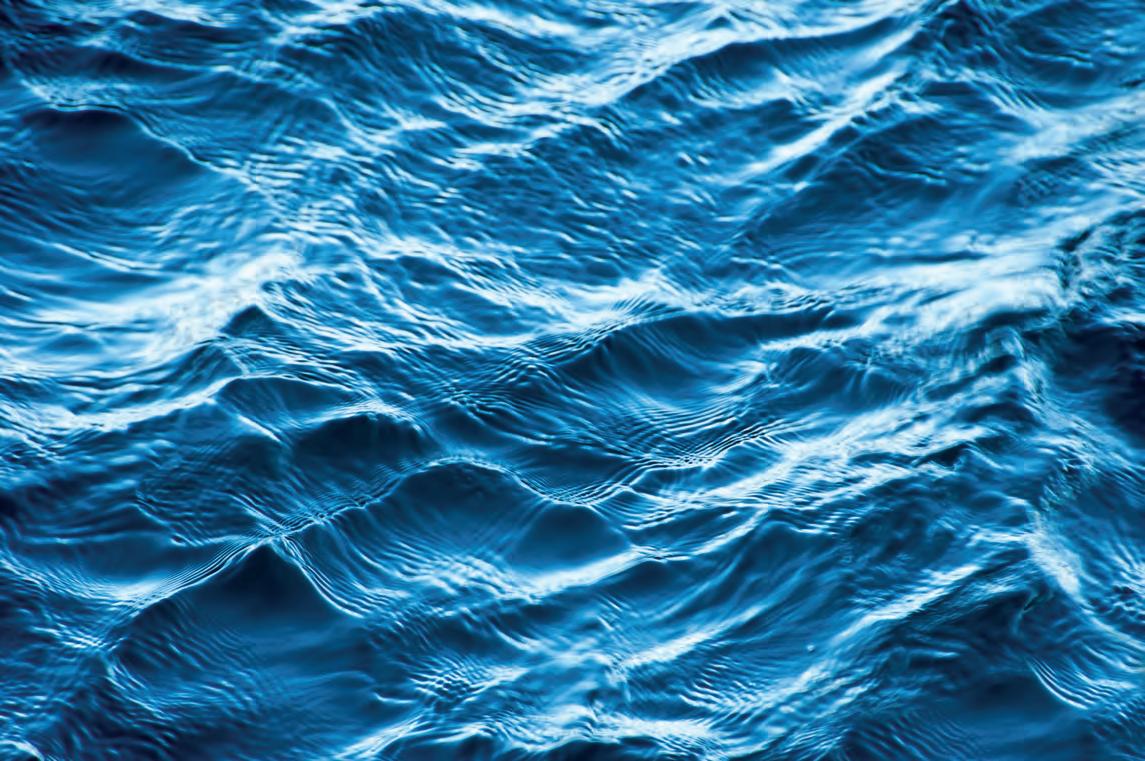








By: Nik Noles
Late September is always an interesting time on the Gulf Coast. The mornings are starting to cool just a touch, but the water is still warm and full of life. Right now, the surf is giving up a nice mix of whiting and pompano for those soaking shrimp or sand fleas in the troughs. Every so often, a slot redfish will cruise the surf, especially around high tide, so it pays to keep a heavier setup ready. Just off the beach, the Spanish mackerel bite has been hot around the bait schools, and a silver spoon or bubble rig has been hard to beat. Bluefish are mixed in as well, keeping things lively. On calmer mornings, you’ll see plenty of surface action with trout and reds pushing mullet right up against the shoreline — a topwater plug or soft plastic can lead to some fast action before the sun gets too high.
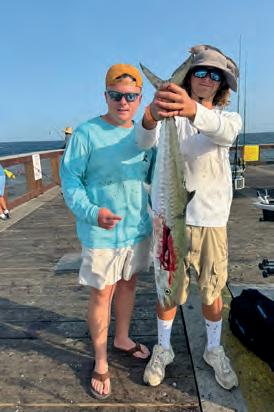
This season, the story has been the bait. Schools of mullet, glass minnows, and pogies are thick, and just about everything we like to catch has been hanging close by. Nearshore reefs and structure are still producing good numbers of mangrove snapper, with a few triggers mixed in. If you’ve got the patience to weed through the smaller fish, there are definitely keepers to be had.
Looking ahead, October is shaping up to be prime time. Once we get that first real cool front, the big bull reds will start their annual run along the beaches and passes. Speckled trout will settle into more predictable patterns inside the bays and rivers, and flounder will begin their migration out toward the Gulf. It’s one of the best months of the year to fish this stretch of coast, no matter what your target is.
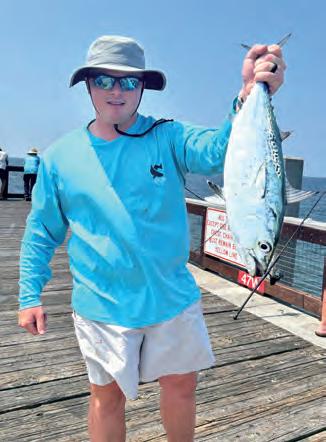
For anyone hitting the water, watch the tides and don’t be afraid to switch up your approach — clear water often calls for lighter leaders and smaller baits. And if you’d rather skip the guesswork, there are plenty of wonderful charters off our beautiful coast.















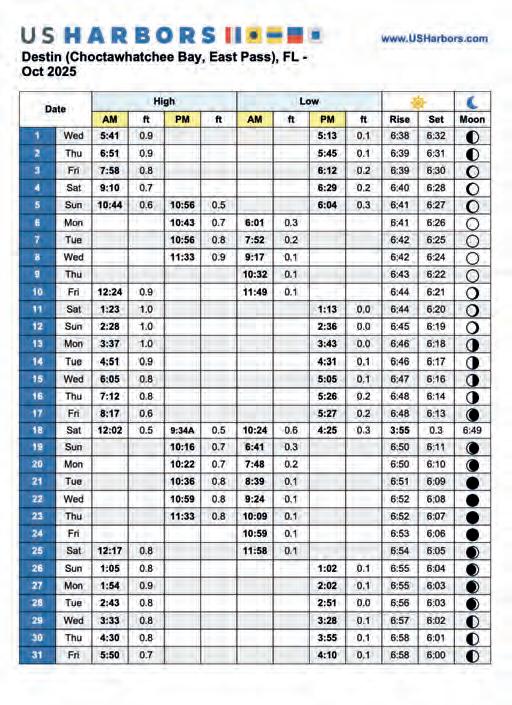


By Leo DePiscis
When you think of the ocean, what comes to mind first? For me, it’s the rhythmic crash of waves, a flock of seagulls overhead, and warm sand slipping between my toes. At The Wharf Fish & Oyster Company on Pensacola Beach, every dish channels that oceanic nostalgia—with breathtaking views to match.
Located right on the shoreline, The Wharf Fish & Oyster Company greets you with a sandy beachfront dining area and a festive tiki bar, just steps from the water. Sunlight glimmers on the Gulf as you settle in, and the sound of the surf becomes the perfect soundtrack to your meal. Whether you’re here for lunch in flip-flops or a sunset dinner in heels, the vibe invites you to slow down and savor every moment.
Picture this: you’re in a beach chair, cocktail in hand—try the One-In-A-Melon (super crisp and refreshing or Tropical Thunder (a reinvented version of a piña colada, but BETTER!)--and a server delivers a mouth-watering entrée without you lifting a finger. That blend of carefree seaside relaxation and top-tier cuisine sums up The Wharf Fish & Oyster Company.
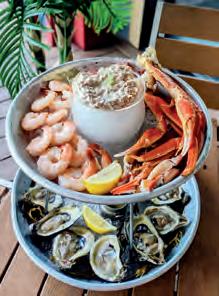
One standout menu item is the Seafood Tower, a beautiful homage to coastal aquatic abundance! Plump Gulf oysters arrive on ice alongside snowy crab clusters, blue crab claws, and a mountain of chilled shrimp. You’ll also find silky ahi tuna poke and a tangy smoked yellowfin dip—an all-in-one sampler that proves why fresh really is best.
If you prefer some “turf” without “surf”, the Southern Range Grass-Fed Ribeye won’t disappoint. The steak is seared to your exact temperature, then paired with velvety Yukon Gold mashed potatoes, crisp broccolini, and a dollop of herbed butter. Every component arrives perfectly balanced, a testament to the kitchen’s finesse and passion.
Behind the scenes, it’s clear the staff share a genuine love for where they work. Sired and nurtured within the network of the Specialty Restaurants Corporation, the team at The Wharf mirrors the parent group’s commitment to exceptional hospitality. Their enthusiasm and the overall culture elevate every bite, essentially transforming a meal into a memorable occasion.
Beyond everyday dining, The Wharf doubles as an elegant wedding venue.


Upstairs, an airy event space with a full bar overlooks the water, while beach-front vows and an elegant beachfront reception are just mere steps away. It’s the kind of place where you can trade “I do’s” at sunset, then feast and dance the night away under the stars, on the pristine sands of Pensacola Beach. The food was exceptional. The atmosphere was memorable. The staff were inviting and engaging. The Wharf Fish & Oyster Company has all of the beachy and coastal vibes one can possibly imagine, yet it also felt like coming home. It’s also obvious to see why, because when the employees feel at home, guests do too—and this restaurant has built its legacy on that simple principle. No matter how many times you visit, you leave already planning your next trip back, because there is truly “no place like home”!


Get in front of 10,000+ outdoor-loving locals and tourists who actually read the ads—because they’re your people.

Build credibility by advertising in a magazine that’s been part of the Gulf Coast community for years. Readers believe what they see here.
Stop waiting on word-ofmouth. Reach high-value customers who are ready to spend—on boats, bait, gear, and everything in between.
Scan the QR Code with your Smartphone to get visit our website and get

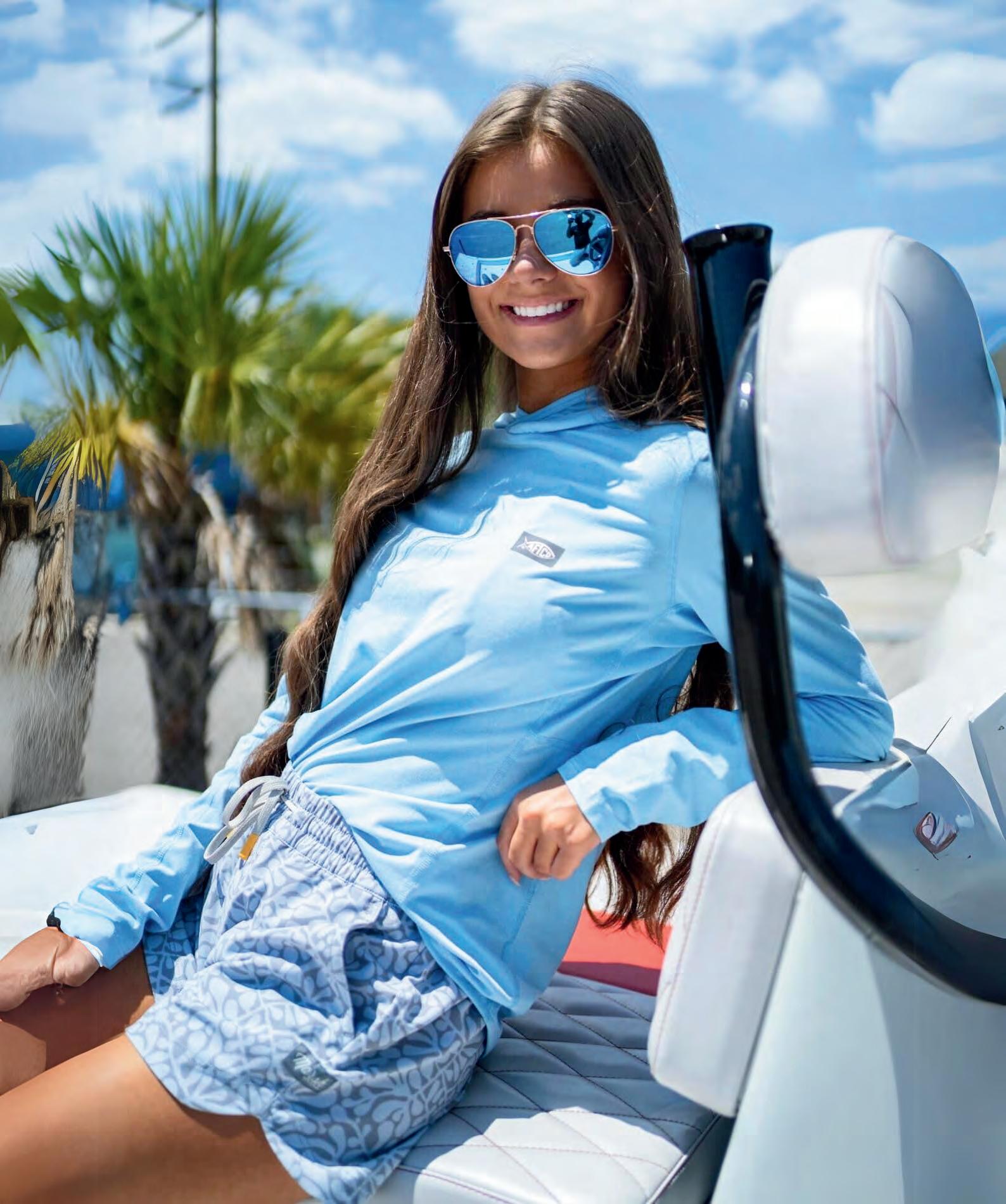






















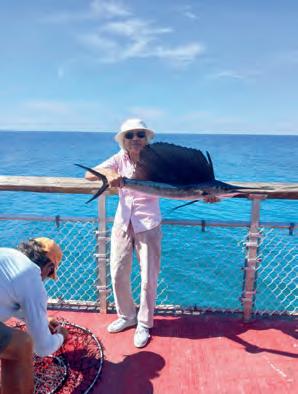








October has traditionally been one of my favorite months of the year for a number of species, but especially for grouper. I’ve always said that Christmas week is the apex of grouper fishing…and it is. I’ve also said that there is a mental hierarchy in grouper, with gags being at the top and reds being at the bottom. I could catch a red grouper on a wooden dowel rod with menhaden oil on it and a hook attached…and that is not an exaggeration.
I hate to be repetitive, but a live pinfish on a Squid Decoy Jig is a dead ringer for red grouper (and all grouper for that matter). If you have the ability to keep a pinfish trap in the water, I would strongly suggest securing several dozen pinfish to take bottom fishing. Everything out there eats them, not to mention they are very hardy and will live all day in the livewell. Red grouper, gags and scamps all view pinfish the same as sailor’s choice and other small snappers as egg eaters. If for no other reason, they will eat them just to kill them, so they don’t eat their eggs. Frozen cigar minnows and sardines have caught more grouper (historically) than all the other baits combined. That’s what they eat!
Tim Barefoot
ice, fuel or weather.

We always had hundreds of pounds of (frozen) cigs and sardines, so let’s not get too carried away with the bait selection. Frozen cigs get the job done, but now that I’m fishing the super stealth decoy
10 seconds. Nothing down there can resist it. Period.
As I always say, “Find the bait, find the fish.” Yes, I like to fish structure like ledges, wrecks or live bottom, but the main ingredient is food. If you mark big stacks of cigar minnows, sardines, beeliners, etc., it’s always a good idea to fish below that, and keep the light line out on the surface or near the surface for all the pelagics. We have vast areas of sand bottom with no structure whatsoever. We just fished big stacks of bait and caught them GOOD! Red grouper can be caught in most depths of water. From as shallow as 15 feet on the Atlantic side to 400 feet and beyond. The only problem with fishing this style of jig and minnow combination is that you are definitely gonna catch gags, scamps, blacks— and those “endangered” American red snapper.

jig/bait combination, I do love a live pinfish or other live baits.
Please take a descending device and familiarize yourself with how to use it.
I guess that’s why I’m writing this article featuring red grouper this month; because that’s about all we have to fish for this time of year. So get out there with some pinfish and frozen minnows and harvest the red grouper and scamps.
On a commercial fishing trip (many years ago), if you ran out of any one of these four things, it would send you back to the Hill: bait,
With that all being said, don’t ever pass up the opportunity to jig up live cigs and sardines for the ULTIMATE combo! The life expectancy of a live cig or sardine on a Decoy Jig is under
Take your kids fishing, too, and make plenty of videos and photos that’ll last a lifetime.
Learn more from Tim Barefoot on his YouTube channel and at barefootcatsandtackle.com.

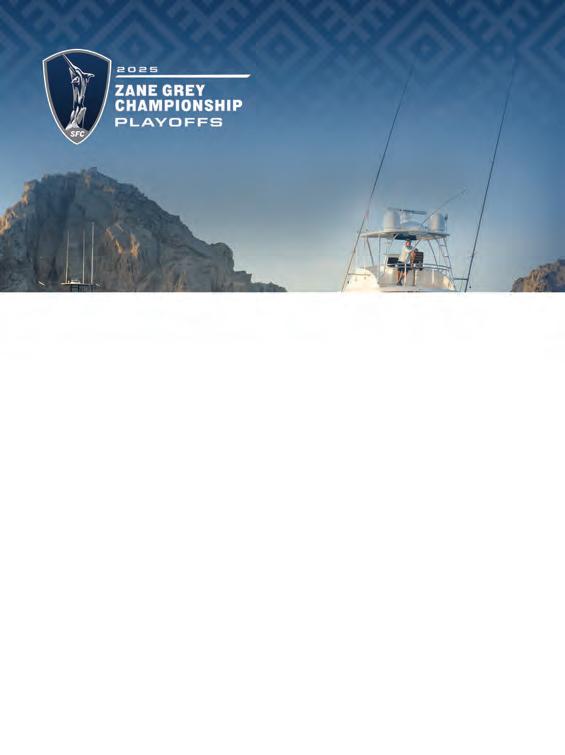




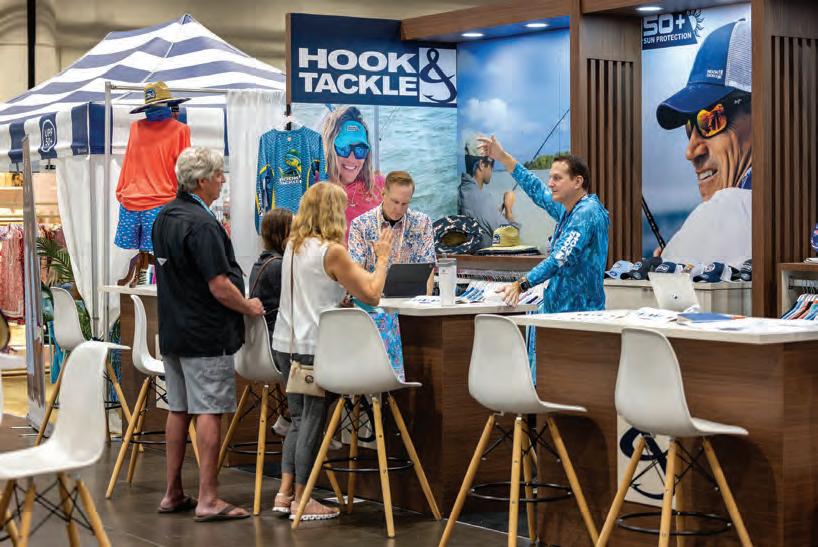
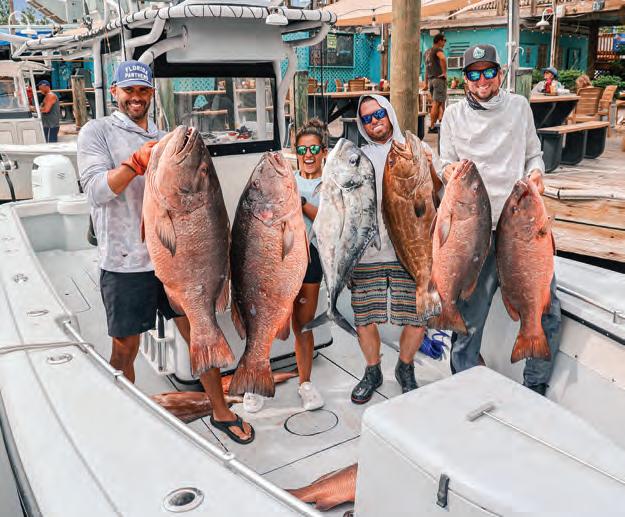
By Astrid deGruchy
When it comes to snapper fishing, the Florida Keys are hard to beat. From shallow mangroves to deep wrecks, these waters hold everything from tasty keepers to tackle-busting giants, and the right gear makes all the difference.
shrimp, pilchards, or cut ballyhoo for consistent action. Downsizing leader in clear water is key. On the reef edge, Yellowtail snapper are Keys gold. Target them from spring through fall using a PENN Slammer IV 4500 with 15 lb mono. Set a steady chum slick and free-line white baits like pilchards on a Mustad 1/0 J-hook. Keep your presentation natural since yellowtails spook easily.
For heavier hitters, Mutton snapper shine during the late spring and early summer full moons. Use a PENN Authority 5500 matched with 30 lb mono leaders and Mustad 3/0 to 4/0 circle hooks (Big Guns are the best). Drift live pinfish or pilchards back naturally, and be ready, when a mutton eats, it’s all power. For something more regal, head deep for queen snapper, the true royalty of the snapper world. These stunning red fish haunt 500-1,000 feet down along the continental shelf. A PENN Fathom II paired with 40 lb braid and a Mustad 6/0 circle hook tipped with squid or bonita chunks gets it done. Most anglers opt for electric reels, but handcranking one up is a badge of honor.

Mangrove snappers are the everyday staple, found year-round around bridges, mangroves, and patch reefs. Light tackle with a PENN Spinfisher VI or Battle III 3500 with 20-25 lb mono gets the job done. Use live


Then there’s the ultimate test: the Cubera snapper. Capt. Kody (@capt_kody) recently put me on a 65-pound Cubera out of Key West. These brutes demand muscle, like PENN International 50VISX, 80-100 lb mono + Mustad 12/0 circle hook type muscle. Summer full moons are prime, and whole lobsters are the bait of choice (yes, not cheap). Once you’re hooked up, it’s a brutal test of endurance, arguably the hardest fight you’ll experience on stand-up gear, especially when you’re handcranking every inch.
Out here, every snapper tells a story… from the quick hits of mangroves to the heartpounding brawls with cubera beasts. We live for those moments, and now you can too. Follow the journey on Bean Sportfishing TV on YouTube. If you are interested in a Cubera Trip, reach out to Capt. Kody Michael on Instagram (@capt_kody) or go to reel-guides.com






It’s no fish tale when you run with a John Deere. You can get everything done faster and easier, so you get more time on the water. Plus, our special offers make them the catch of the day.



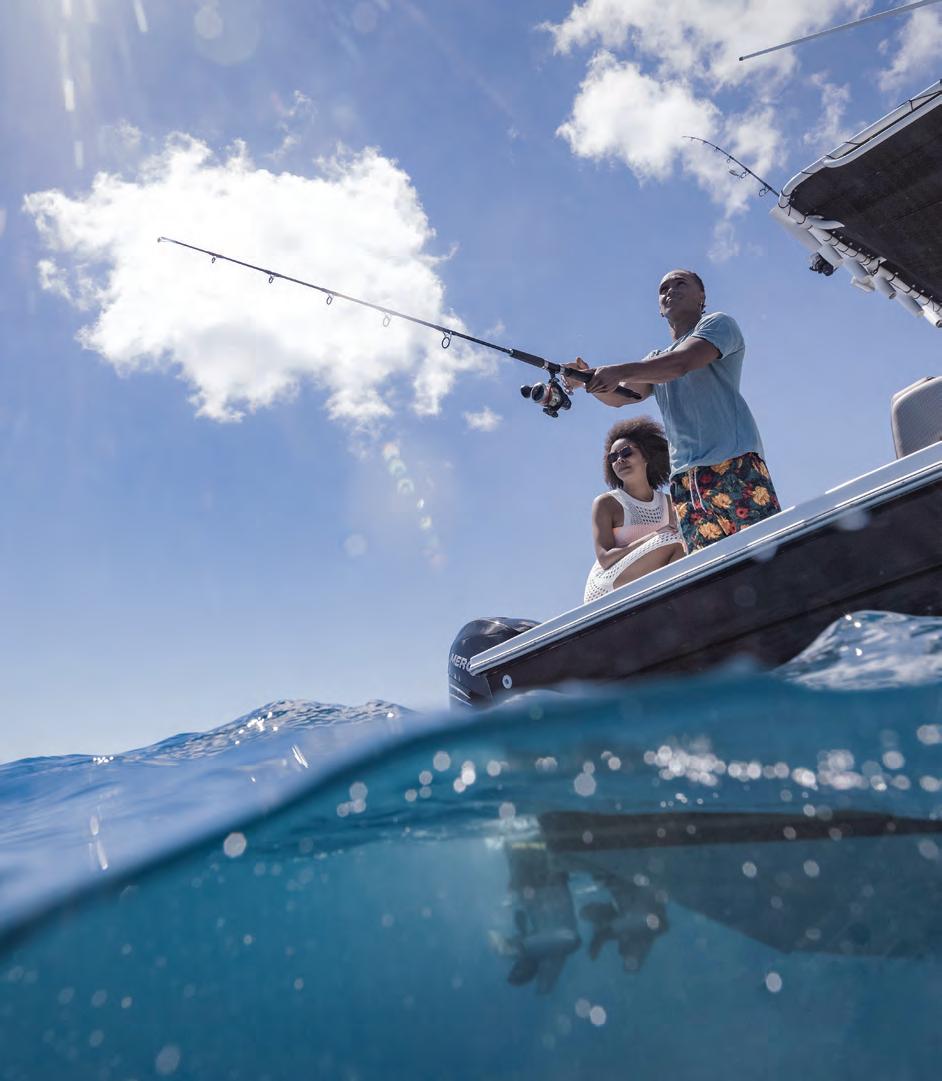
Nestled in the heart of the Caribbean, the US Virgin Islands embody a harmonious blend of natural beauty, cultural vibrancy, and laid-back serenity. These islands are more than just a picturesque getaway; they are a living testament to nature’s rhythm and resilience, effortlessly in tune with the world around them.
With no passport required for U.S. citizens, from the moment you arrive, the islands’ natural rhythm is palpable. The gentle sway of palm trees, the soothing sound of surf crashing against sandy shores, and the vibrant melodies of local music all echo the heartbeat of this tropical paradise. The islands’ lush landscapes, with their verdant hills and crystal-clear waters, mirror the steady pulse of life that sustains the local ecosystems and communities alike.
The US Virgin Islands’ environment is a symphony of biodiversity with world class fishing and diving. These natural elements are not static; they dance in harmony, influenced by the tides, wind, and seasonal changes—further emphasizing the islands’ intrinsic rhythm. This delicate balance underscores the importance of conservation efforts, ensuring that future generations continue to experience the islands’ natural cadence.
Culturally, the US Virgin Islands are equally in tune. The music, dance and festivals reflect a vibrant heritage rooted in African, European and Caribbean traditions. The spirited calypso beats
and reggae rhythms are expressions of life's ongoing dance—celebrating resilience, community and joy. These cultural expressions are an extension of the islands’ natural rhythm, showcasing how human life here moves seamlessly with nature’s flow.

In a world often dictated by chaos and rapid change, the US Virgin Islands serve as a reminder of the beauty of being in sync with nature’s tempo. Their natural, cultural and ecological rhythms offer







a blueprint for sustainable living and harmony. As travelers and residents alike continue to embrace this rhythm, they uphold a legacy of balance—one that celebrates life’s natural flow and the enduring spirit of these remarkable islands. In the US Virgin Islands, being in rhythm
way of life.
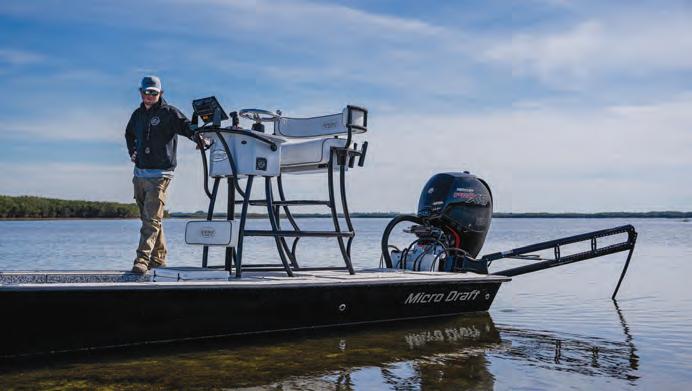




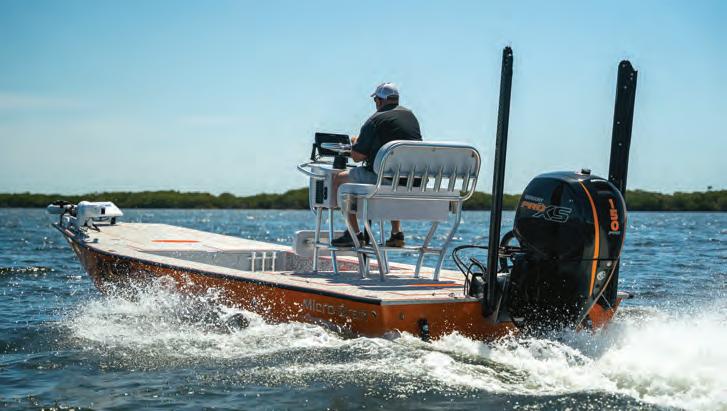

The North Carolina Wildlife Resources Commission (NCWRC) will implement Delayed Harvest Trout Waters regulations on 33 trout waters beginning Oct. 1. Under Delayed Harvest Trout Waters regulations, only catch-and-release of trout is permissible from program waters between Oct. 1 and June 5, 2026. No natural bait may be possessed, and anglers can fish only with artificial lures with one single hook. An artificial lure is defined as a fishing lure that neither contains nor has been treated with any substance that attracts fish by the sense of taste or smell. NCWRC staff stock Delayed Harvest Trout Waters from fall through spring with high densities of trout to increase anglers’ chances of catching trout. Delayed Harvest Trout Waters, posted with diamond-shaped, black-andwhite signs, are popular fishing destinations for anglers who enjoy catchand-release trout fishing. Anglers should be aware that stocking locations along streams may be different than in the past due to hurricane damage impacting the stocking truck and angler access.
For more information on trout fishing and stocking, visit ncwildlife.gov/trout and to follow the progress of the Setzer renovation, visit ncwildlife.gov/setzer.
